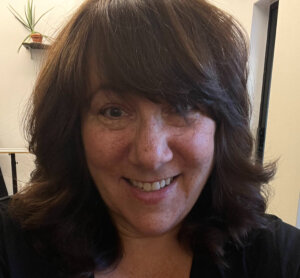Fractional Parenting: What Makes a Jewish Mother?
The New York Times recently ran a fascinating editorial essay by Adam Cohen on scientific research that soon may make it possible for a baby to have three biological parents.
Cohen writes:
Scientists have created baby monkeys with a father and two mothers. Their goal was to eliminate birth defects, but increasing the number of biological parents beyond two could add a futuristic twist to an area where the law already is a mess: the question of who, in this age of artificial insemination and surrogacy, should be considered the legal parents of a baby.
Researchers at the Oregon National Primate Research Center were looking for ways to eliminate diseases that can be inherited through maternal DNA. They developed, as the magazine Nature reported last summer, a kind of swap in which defective DNA from the egg is removed and replaced with genetic material from another female’s egg. The researchers say the procedure is also likely to work on humans.
The people from whom this potential baby would spring would be called “fractional parents,” to use a term coined by University of San Diego Law School Professor Adam Kolber.
It makes a baby sound like a jet, or a time-share.
Semantics aside, there are any number of thorny questions that spring from such a concept.
According to Cohen, they include:
Could a baby one day have 100 parents? Could anyone who contributes DNA claim visitation rights? How much DNA is enough? Can a child born outside the United States to foreigners who have DNA from an American citizen claim U.S. citizenship?
And if, say, two of the “fractional parents” involved are Jewish but the third is not, what would be made of such a baby’s religious status?
Rabbi Michael Broyde, a law professor at Emory University, member of the Beth Din of America and frequent speaker about Jewish law where it intersects with assisted reproduction and other medical ethics issues, says in his halachic view, the birth mother is the mother according to Jewish law.
“Jewish law is naturalistic in the sense that a woman goes into labor, has a baby, and do you know what we call the woman? The mother,” he told The Sisterhood. “It’s only those who are doing genetic analysis who pose these questions.”
But, as commonly found in discussions of Jewish law, authorities differ in their conclusions.
One of the most esteemed halachic decisors in Orthodox America, Rabbi J. David Bleich, wrote in an article published in the journal Tradition, that while the preponderance of textual evidence leads one to adduce that the woman who gives birth is the mother according to Jewish law,
According to the article’s abstract:
He concedes that there are other opinions, and suggests that indeed there might be room to rule that the genetic mother is also the halakhic mother. He basically dismisses the position that it is the donor alone who is the halakhic mother (or that there is no halakhic mother at all).
The article, titled “Ovum Donations: A Rabbinic Conceptual Model of Maternity,” can be purchased for download here.
Increasingly, though, as reported in this article in the haredi web publication “Vos Iz Neias” (What is News), Israeli Orthodox decisors of Jewish law are ruling that, in cases of donated human eggs, it is the egg donor who is the halachic mother.
This is a radical departure from the centuries-old convention that a child is the religion of the woman who bears him, but Rabbi Broyde was sanguine about the change.
Rabbi Broyde said:
There’s been an ongoing dispute since the beginning of surrogate motherhood as to whether the mother is the genetic mother or they’re both the mother. In the last 20 years there’s been more of a consensus around the genetic mother being the egg donor. There’s been a slight shift in that favor but the conventional approach is to be strict.
Unless both the birth mother and the genetic mother is Jewish, a conversion is done as a stricture.
When I asked him about whether rabbis have questioned the Jewish status of a person who is the product of donated eggs or surrogate motherhood, Rabbi Broyde said it hasn’t yet come up.
After all, the technology became available just over two decades ago.
But, he said, “we’re getting there.”
A message from our Publisher & CEO Rachel Fishman Feddersen

I hope you appreciated this article. Before you go, I’d like to ask you to please support the Forward’s award-winning, nonprofit journalism during this critical time.
We’ve set a goal to raise $260,000 by December 31. That’s an ambitious goal, but one that will give us the resources we need to invest in the high quality news, opinion, analysis and cultural coverage that isn’t available anywhere else.
If you feel inspired to make an impact, now is the time to give something back. Join us as a member at your most generous level.
— Rachel Fishman Feddersen, Publisher and CEO

























